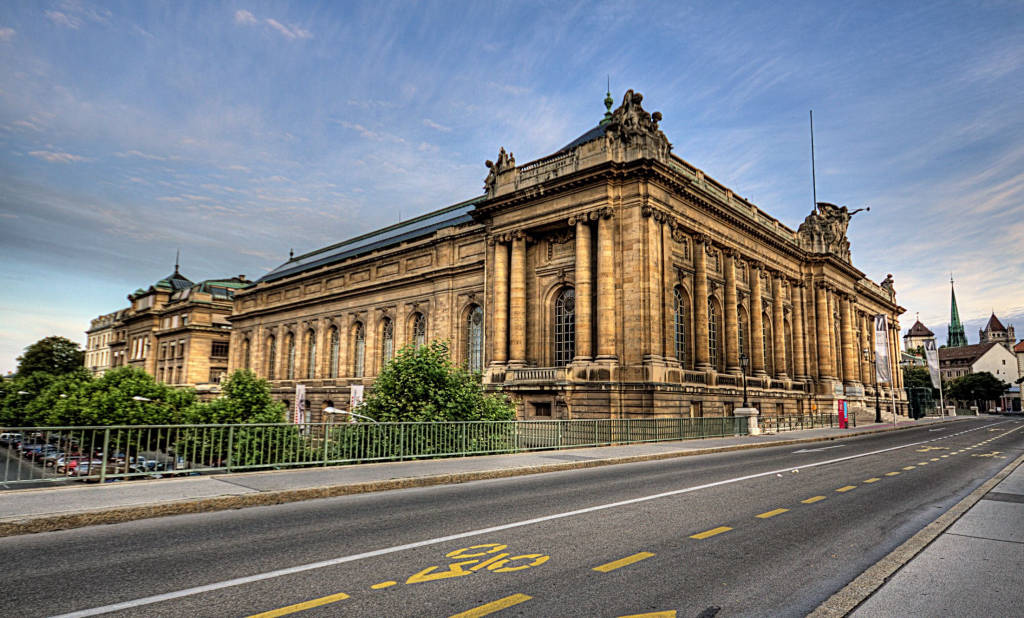The Musée d'Art et d'Histoire (Museum of Art and History) is the largest art museum in Geneva, Switzerland. The museum is located in Les Tranchées, right in the city centre, on the site of the former ring of fortifications. This structure was built by architect Marc Camoletti between 1903 and 1910, financed and started at the request of banker Charles Galland (1816–1901).
The structure is square in shape, with 60 m (200 ft) long sides surrounding the courtyard. It has four floors, with lanterns on the roof on the top floor. Total exhibition space is up to 7,000 m². The facade is decorated with sculptures by Paul Amlehn: an allegory of art, painting depictions, sculptures, some drawings and architecture, mounted on the head triangular exit above the entrance. In addition, visitors can see two other allegories, of archeology and applied arts, in the left and right corners of the building respectively. The top frill includes the names of illustrious Geneva artists such as: Dassier, Baud-Bovy, Agasse, Töpffer, Liotard, Diday, Petitot, Arlaud, Pradier, Menn, etc.
The museum has existed and operated as an institution since 1826. The Académique Museum, which exhibits natural history and archeology, was also recently established (in 1818). The Musée des Beaux-Arts was acquired by the city of Geneva in 1851. It also received the State of Geneva's collection of historic weapons and artifacts in 1870.
The fine arts gallery features paintings from the Middle Ages to the 20th century, with works from a wide variety of schools from Italy, the Netherlands, France, England, Geneva and Switzerland. The most famous painting is Konrad Witz's "Miracle Manuscript of Fishes" (1444), located in Witz's Altar of Saint Peter. Works from other great artists including Rembrandt, Cézanne, Modigliani and the sculptor Rodin, are also honored here. At the same time, the Museum also displays many works by Jean-Étienne Liotard, Ferdinand Hodler, Félix Vallotton, Edmond Jean de Pury and Jean-Baptiste-Camille Corot. The collection of works by the Genevan Neoclassical painter Jean-Pierre Saint-Ours is here a glorious highlight in terms of artistic value that makes it so attractive, even when it has to be. than any other museum in the world.
The Applied Art Gallery features collections of Byzantine art, medieval and Renaissance symbols, weapons, silver and tinware, musical instruments and textiles. The complete interior and wood paneling from some rooms of the Lower Zizers Castle (late 17th century) have been preserved in the museum. The archaeological display area displays the results of research and discoveries from prehistoric Europe, ancient Egypt (with mummies from the 9th century BC), the Kerma culture of Sudan, the Near Eastern, Ancient Greek, Roman and pre-Roman Italian, as well as an ancient altar.
 Register
RegisterSign in Travel Agent
Sign in Supplier
Sign in Affiliate
Sign in Guru



 Rue Charles-Galland 2, 1206 Genève, Switzerland
Rue Charles-Galland 2, 1206 Genève, Switzerland